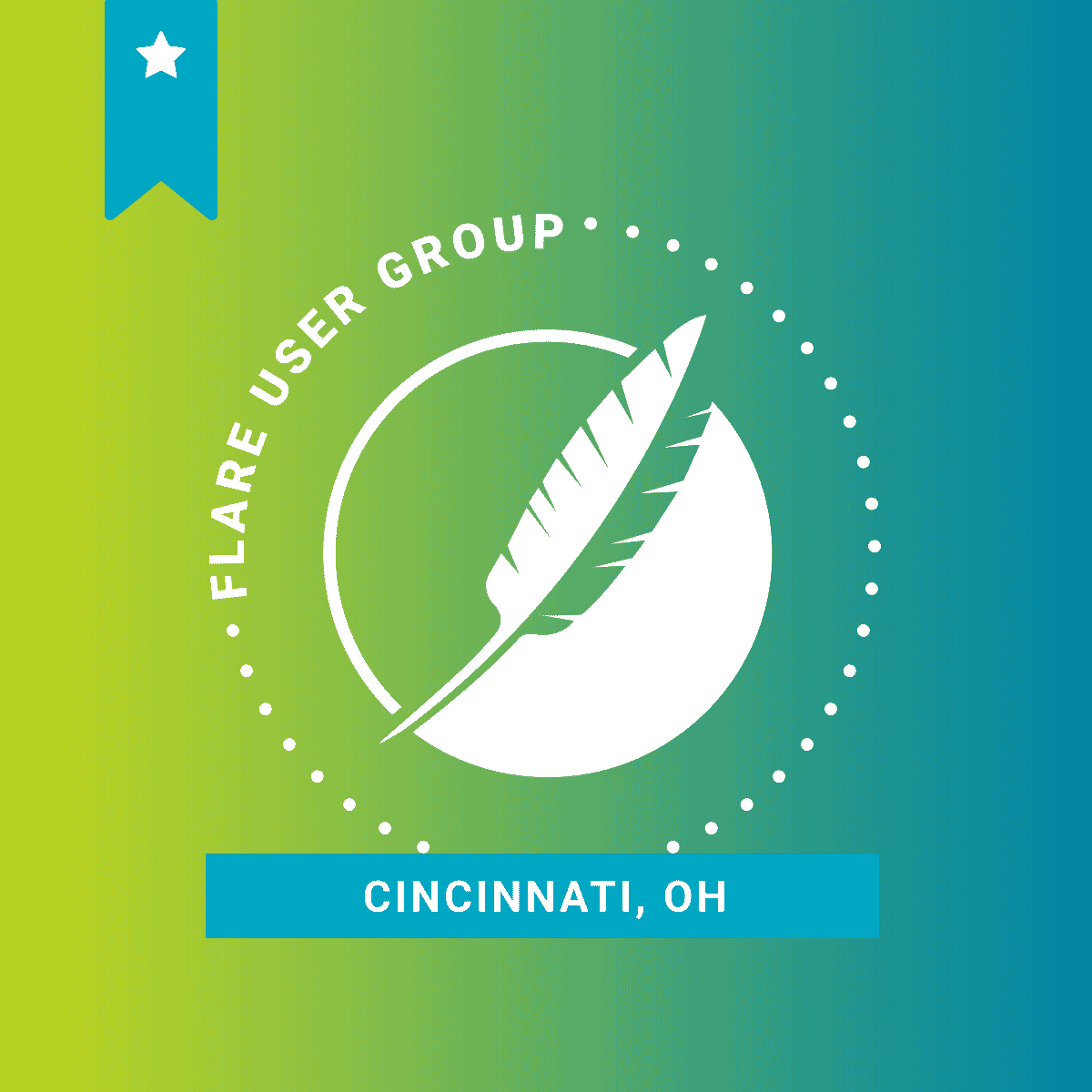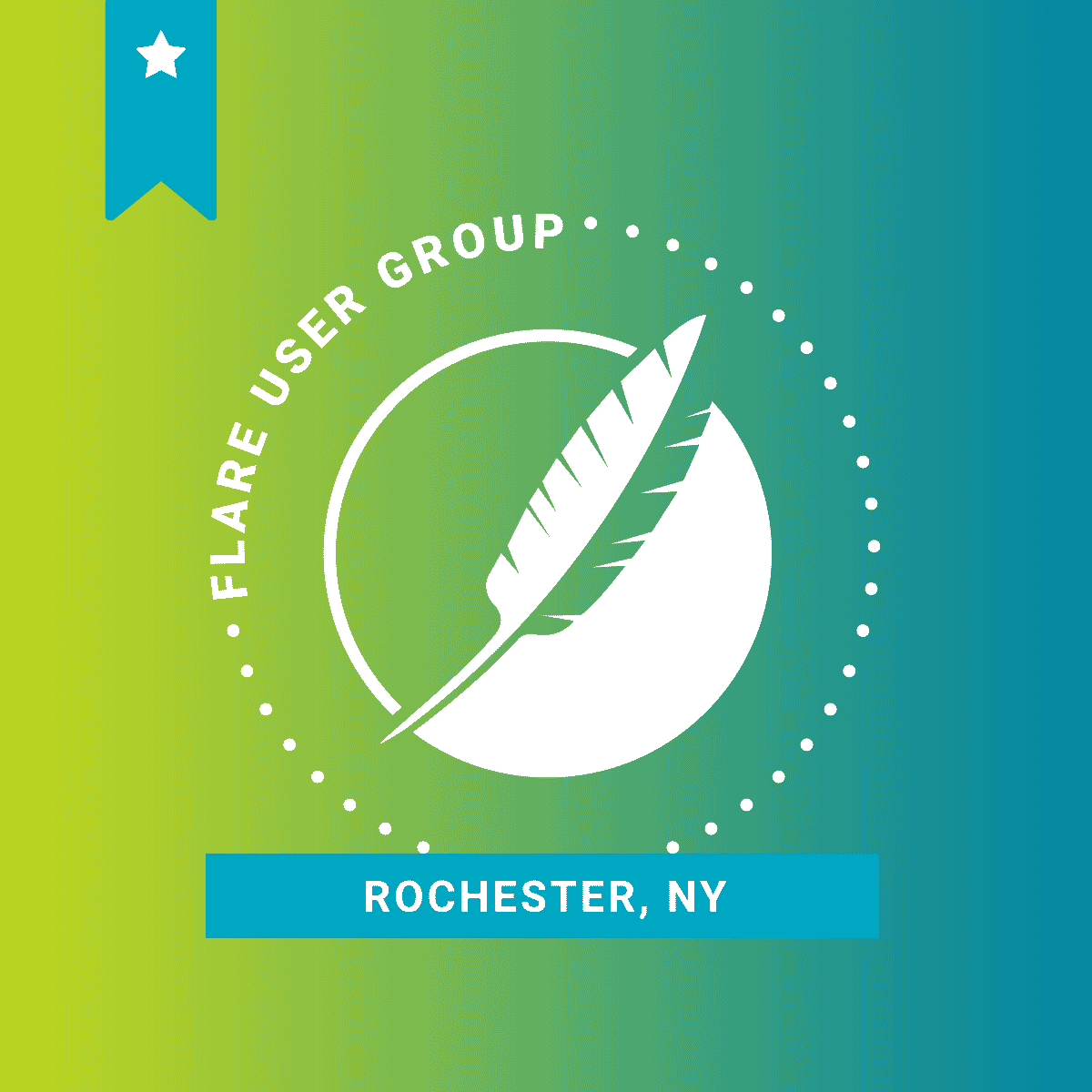MadCap Flare User Groups bring together local technical writers and Flare users through their shared interest in using Flare. The next post in our community spotlight series features Kate Montressor, an organizer of the Silicon Valley MadCap Flare User Group. She shares her and other member’s experiences of being a part of a local user group, and the benefits of connecting with local members.
Who Are We?
We are the Silicon Valley MadCap Flare User Group (S V McFug). Our members meet from all over the Silicon Valley area of Northern California – in spite of the traffic!
We found out about Flare User Groups at MadWorld 2017, and thought it would be a great way to meet other Flare users and share ideas. Since forming, our meetings give members a chance to discuss our Flare experiences, give demos to new users, and engage in an in-depth discussion of a different Flare feature each month.
How We Started Using MadCap Flare
When it comes to how we first started using Flare, every member has a unique story and background. Here are some experiences of a few of our regular attendees.
Kate Montressor, Principal Tech Writer, Fortinet, Inc: I started using Flare when the company I was working for moved their product to the cloud. They needed modular documentation that matched their product. We tested several different doc tools, but Flare was hands-down the best solution. In designing our first project, we used every feature Flare had to offer. This made our docs a little over-loaded, but it taught me a lot about the capabilities of Flare. My background in HTML and CSS made Flare fun to customize. We since pared down on the features, based on user feedback, and produced outstanding and useful documentation.
I learned about Flare User Groups at the MadWorld conference in April of 2017. When I got home, I was surprised to find that there wasn't already a Flare User Group in Silicon Valley, so I organized a group and found that another group was also forming in our area, headed by Hennah Rahman. So we joined forces and have been going pretty steady ever since.
Hennah Rahman, Contract Tech Writer: I started using Flare after attending the MadWorld conference in 2015. At the time, I was the only writer at Labcyte and using DITA. We didn’t have the time or budget to continue the CSS customization needed to generate production quality PDFs and write new content, so I asked to attend the MadWorld conference to see if I could use Flare to help me speed up my production process. While at the conference, I spent time in the Technical Support Lounge to get all my questions answered and worked every evening to convert my projects from DITA to Flare and start customizing my output. Needless to say, I was sold on Flare and the support that the MadCap team provided. By the time I left the conference, I had converted all my projects to Flare and had some customizations completed for my PDF output. Since then, we have added a number of PDF guides, as well as a Tripane output containing all of our documentation. We are currently working on a responsive HTML output that will be available early next year.
Peter Kelley, Director at Visa: I started using Flare a few years ago in my role as a Director at Visa when we selected it as a replacement tool for a custom software application that I managed. We now use MadCap Flare to author and publish the Visa Rules for our clients, which is a 1,000+ page highly formatted PDF document. This document was previously produced with a custom built application specifically designed for that purpose. We had a very specific output style to match when we transitioned, and Flare was able to match it almost exactly. You can see this output by looking at the public version of the Visa Rules which is available on the Visa website. We have now moved on to producing other rule books and to using MadCap Lingo for translation of our Visa Rules into multiple languages.
Benefits
One of the benefits of the user group is the opportunity to meet peers who are also using MadCap Flare. The user group allows us to share tips and have another place to ask questions. The monthly meetings keep the momentum going after the annual MadWorld conferences and allow us to stay connected. Some of the topics we have covered are:
- Templates and Global Project Linking
- Using Tags, Conditions, and Auto-Numbering
- Using Find and Replace to its Full Potential – This topic will will be presented as a session at MadWorld 2019 by Peter Kelley!
We record our meetings and demos, (mostly) so users who can’t make it to the meeting can see what we talked about. To view the demos, you can visit our site here.
Challenges
Some of the challenges of running a user group are making sure to have relevant topics to cover each month and growing the membership. Since we meet in the evenings after work, people often have other commitments. We try to rotate the location of the meeting in order to share the traffic burden.
Tips for Starting a User Group
One major tip of starting and maintaining a user group is to get the word out as much as possible. We have a website where we post recent upcoming meetings, as well as recordings of our past meetings. We use Google Groups for announcements, job postings, and special requests from other members. We also have a LinkedIn page, a Twitter account (@SVMcFug), and a Facebook page, which all announce our meetings. We are also on Meetup, which has brought in new members.
We are a small but growing group, with members from all levels of Flare: beginner to advanced. We benefit from each other’s experiences and learn things about Flare that we might not have picked up before. We take turns doing various presentations, showcasing what we have been doing in Flare, and we find that we all use it a bit differently. Here’s a couple of additional tips that we’ve learned since starting the group:
- Start simple, such as with monthly meetings. If possible, try to stick to the same day/time every month so people get used to the schedule.
- You can meet at any group member’s office conference room. But if that’s not an option, a restaurant or café works as well.
- Discussion style is just as helpful as a presentation. Encourage participants to bring in issues they are encountering to seek possible solutions, and new tricks they have learned to share.
- Above all, have fun!
If you’d like to join us in our next meeting, you can reach out to us at our Google Groups site or on Meetup. Our next meeting is on January 15, 2019 at 6:30 PM - hope to see you there!







